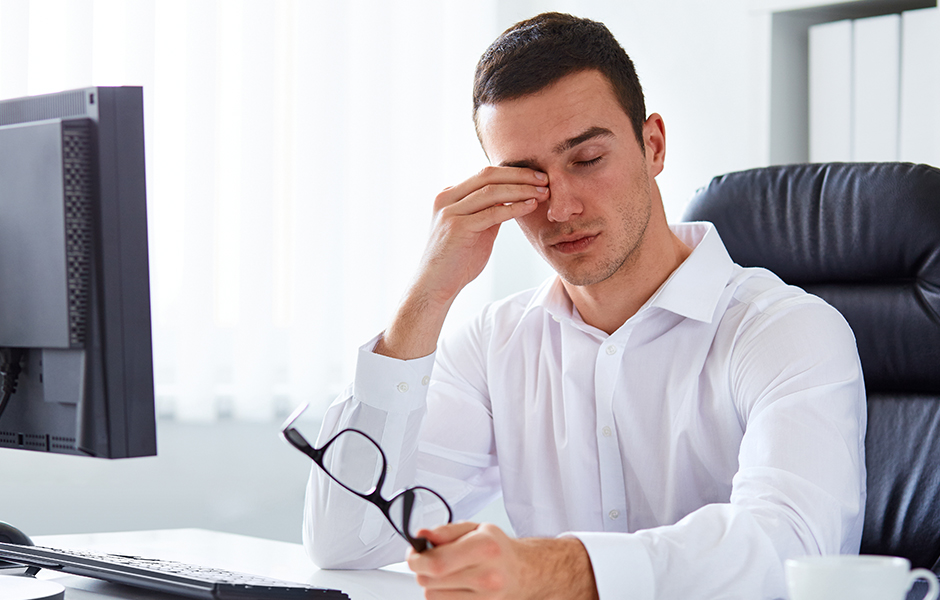Sjogren’s Patients with Chronic Dry Eyes Have High Medical Costs, High Anxiety, in Chinese Study

Sjogren’s syndrome patients with chronic dry eyes have higher medical costs than people with dry eyes who don’t have Sjogren’s, a study from Eastern China shows.
The research also points to a link between anxiety and medical costs for dry eye treatment in Sjogren’s patients.
The study, “Social-economic analysis of patients with Sjogren’s syndrome dry eye in East China: a cross-sectional study,” appeared in the journal BMC Opthalmology.
Patients with Sjogren’s typically develop chronic dry eyes, which involves inflammation of the glands that secrete tears, reducing tear production.
“In people with dry eye, thin spots in the tear film may appear and the tears no longer adequately protect and support the health of ocular surface tissues,” the Sjogren’s Syndrome Foundation says on its website.
Compared to Sjogren’s patients without dry eyes syndrome, those with it show more severe signs and symptoms, leading to more challenging treatment, and exhibiting a worse prognosis.
Treatment of chronic dry eyes represents a significant economic burden on both patients and the healthcare system in China. Anxiety, which is common in these patients, aggravates direct and indirect medical costs.
Despite previous studies addressing the economic and psychological impact of chronic dry eyes, no research investigated the medical cost of treatment in an Asian group of Sjogren’s dry eye patients.
The scientists analyzed 34 Sjogren’s patients with dry eyes and 30 with dry eyes not due to Sjogren’s. All participants completed self-reported questionnaires on ocular surface disease — which includes dry eyes — anxiety, and patients’ income, treatment, and medical costs.
Results showed that Sjogren’s patients with dry eyes represented an average annual expense of Chinese Yuan 7,637.2, which corresponds to approximately $1,207.59 U.S. This is similar to results in the U.K., the researchers said.
Patients themselves paid an average of Chinese Yuan 2,627.8, or about $415.51 U.S.
This represents a 5.5 and 4.5 times higher expense compared to treating dry eyes in people without Sjogren’s syndrome, respectively, even accounting for medical insurance.
Sjogren’s patients with chronic dry eye also had significantly higher expenses in both Chinese (35.6 times) and Western medicine (78.4 percent). The expenses in Western medicine were mainly driven by cyclosporine eye drops, which are only partially covered by medical insurance.
Chinese medicine represented approximately 80 percent of the total medical costs in Sjogren’s dry eye patients.
Indirect costs, which include transportation, nutrition, shelter, and household appliances such as air humidifiers, were also 70 percent higher in Sjogren’s patients with dry eye syndrome.
The study showed that, in Sjogren’s dry eye patients, higher anxiety was linked to greater total medical expenditure and the expense of Chinese medicine.
“More anxiety and depression lead to deterioration of ocular symptoms and more expenditure on medical treatment, which formed a vicious cycle,” the investigators wrote.
The results also showed that more anxiety was linked to a lower level of education.
“Medical expense is a considerable economic burden to patients with [Sjogren’s dry eye syndrome] in East China,” the scientists wrote.
“In addition, effective and inexpensive treatment is urgently needed to reduce the financial burden of [Sjogren’s dry eye] on both patients and healthcare systems,” they added.
A special focus should be devoted to alleviating anxiety and improving information among Sjogren’s patients with chronic dry eyes, researchers wrote.
They cautioned the findings need to be confirmed in studies with larger groups of patients.






